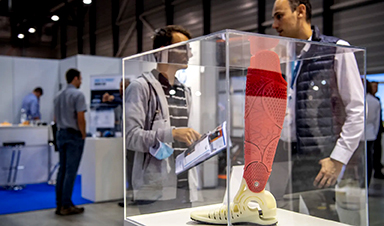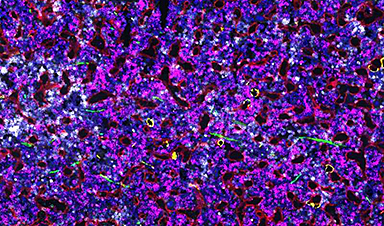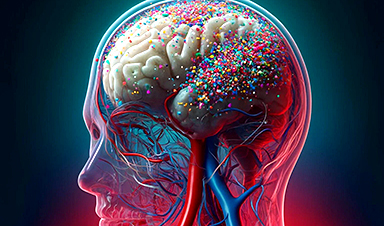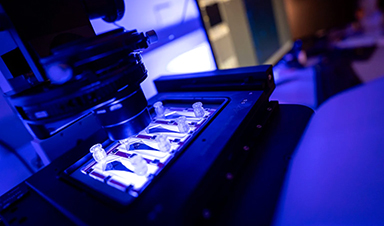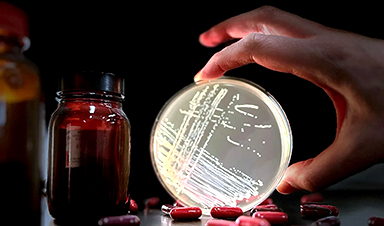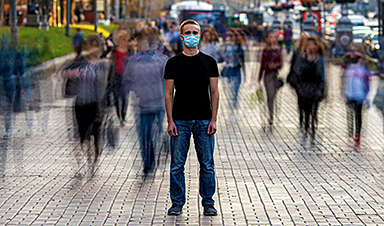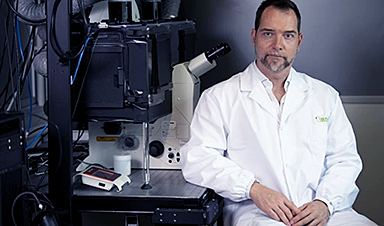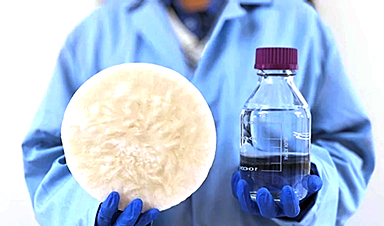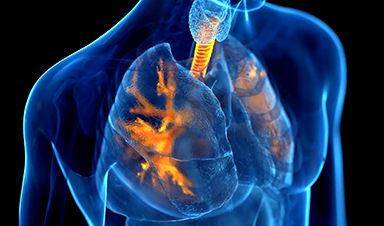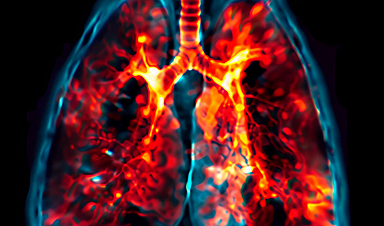| All displays consist of a lattice of tiny dots of light, called pixels, the brightness of which can be individually controlled. The total number of pixels—and therefore, the resolution and display size—is limited by how many of these pixels can be addressed within a given fraction of a second. Therefore, display manufacturers try to use in the pixel control units materials that exhibit a very high “electron mobility”, which is a measure for how quickly current will start to flow through such a control unit as a response to voltage being applied—and thus, how “quick” the pixel is. | |
| A new material called “ITZO” (for its constituent elements indium, tin, zinc and oxygen) promises to be up to seven times faster than the current state-of-the-art material. However, it has not been clear where this improvement comes from, hampering its adoption for industrial applications. | |
| Hokkaido University material scientist Hiromichi Ohta and his team used their unique measurement technique to clarify this point. In their recent paper published in the journal Applied Electronic Materials (“Thermopower Modulation Analyses of High-Mobility Transparent Amorphous Oxide Semiconductor Thin-Film Transistors”), they showed that the higher electron mobility results from the unusual fact that in ITZO films of sufficient thickness, free charges accumulate at the interface with the carrier material and thus enable passing-through electrons to travel through the bulk of the material unhindered. |
| The unique ability of the group around Ohta comes down to a very simple formula: The electron mobility is proportional to the free travel time of the charge carriers—electrons in this case—divided by their effective mass. And while the measurement of the electron mobility itself is a relatively standard technique, effective mass and free travel time cannot be measured as easily, and therefore it is difficult to tell what factor is responsible for the electron mobility. | |
| But by measuring how the electric field inside the material changes in response to an applied magnetic field as well as to a temperature gradient, Ohta’s team could deduce the effective mass of the electrons—and then calculate the free travel time, as well. | |
| It turns out that both the effective mass is significantly smaller than in current state-of-the-art materials and the free travel time is much higher and, therefore, both factors contribute to the higher electron mobility. | |
| In addition, by observing how their results depend on the thickness of the ITZO material, they could deduce how interface and bulk of the material contribute to these effects. | |
| Ohta explains the significance of this analysis: “Using the knowledge we gained from this study, we may in the future design other transparent oxide semiconductor thin-film transistors with different chemical compositions that exhibit even better electron mobility properties.” Thus, this study is a major step towards the next generation of ultra high-resolution displays. |
News
Scientists Invent Plastic That Can Dissolve In Seawater In Just A Few Hours
Plastic waste and pollution in the sea have been among the most serious environmental problems for decades, causing immense damage to marine life and ecosystems. However, a breakthrough discovery may offer a game-changing solution. [...]
Muscles from the 3D printer
Swiss researchers have developed a method for printing artificial muscles out of silicone. In the future, these could be used on both humans and robots. Swiss researchers have succeeded in printing artificial muscles out [...]
Beneficial genetic changes observed in regular blood donors
Researchers at the Francis Crick Institute have identified genetic changes in blood stem cells from frequent blood donors that support the production of new, non-cancerous cells. Understanding the differences in the mutations that accumulate [...]
Shocking Amounts of Microplastics in the Brain – It Could Be Increasing Our Risk of Dementia
The brain has higher concentrations of plastic particles compared to other organs, with increased levels found in dementia patients. In a comprehensive commentary published in Brain Medicine, researchers highlight alarming new evidence of microplastic accumulation [...]
Baffling Scientists for Centuries: New Study Unravels Mystery of Static Electricity
ISTA physicists demonstrate that contact electrification depends on the contact history of materials. For centuries, static electricity has intrigued and perplexed scientists. Now, researchers from the Waitukaitis group at the Institute of Science and [...]
Tumor “Stickiness” – Scientists Develop Potential New Way To Predict Cancer’s Spread
UC San Diego researchers have developed a device that predicts breast cancer aggressiveness by measuring tumor cell adhesion. Weakly adherent cells indicate a higher risk of metastasis, especially in early-stage DCIS. This innovation could [...]
Scientists Just Watched Atoms Move for the First Time Using AI
Scientists have developed a groundbreaking AI-driven technique that reveals the hidden movements of nanoparticles, essential in materials science, pharmaceuticals, and electronics. By integrating artificial intelligence with electron microscopy, researchers can now visualize atomic-level changes that were [...]
Scientists Sound Alarm: “Safe” Antibiotic Has Led to an Almost Untreatable Superbug
A recent study reveals that an antibiotic used for liver disease patients may increase their risk of contracting a dangerous superbug. An international team of researchers has discovered that rifaximin, a commonly prescribed antibiotic [...]
Scientists Discover Natural Compound That Stops Cancer Progression
A discovery led by OHSU was made possible by years of study conducted by University of Portland undergraduates. Scientists have discovered a natural compound that can halt a key process involved in the progression [...]
Scientists Just Discovered an RNA That Repairs DNA Damage – And It’s a Game-Changer
Our DNA is constantly under threat — from cell division errors to external factors like sunlight and smoking. Fortunately, cells have intricate repair mechanisms to counteract this damage. Scientists have uncovered a surprising role played by [...]
What Scientists Just Discovered About COVID-19’s Hidden Death Toll
COVID-19 didn’t just claim lives directly—it reshaped mortality patterns worldwide. A major international study found that life expectancy plummeted across most of the 24 analyzed countries, with additional deaths from cardiovascular disease, substance abuse, and mental [...]
Self-Propelled Nanoparticles Improve Immunotherapy for Non-Invasive Bladder Cancer
A study led by Pohang University of Science and Technology (POSTECH) and the Institute for Bioengineering of Catalonia (IBEC) in South Korea details the creation of urea-powered nanomotors that enhance immunotherapy for bladder cancer. The nanomotors [...]
Scientists Develop New System That Produces Drinking Water From Thin Air
UT Austin researchers have developed a biodegradable, biomass-based hydrogel that efficiently extracts drinkable water from the air, offering a scalable, sustainable solution for water access in off-grid communities, emergency relief, and agriculture. Discarded food [...]
AI Unveils Hidden Nanoparticles – A Breakthrough in Early Disease Detection
Deep Nanometry (DNM) is an innovative technique combining high-speed optical detection with AI-driven noise reduction, allowing researchers to find rare nanoparticles like extracellular vesicles (EVs). Since EVs play a role in disease detection, DNM [...]
Inhalable nanoparticles could help treat chronic lung disease
Nanoparticles designed to release antibiotics deep inside the lungs reduced inflammation and improved lung function in mice with symptoms of chronic obstructive pulmonary disease By Grace Wade Delivering medication to the lungs with inhalable nanoparticles [...]
New MRI Study Uncovers Hidden Lung Abnormalities in Children With Long COVID
Long COVID is more than just lingering symptoms—it may have a hidden biological basis that standard medical tests fail to detect. A groundbreaking study using advanced MRI technology has uncovered significant lung abnormalities in [...]


